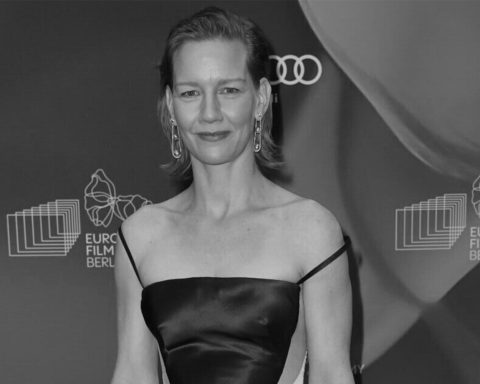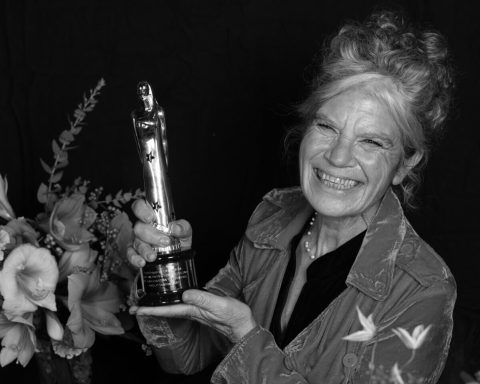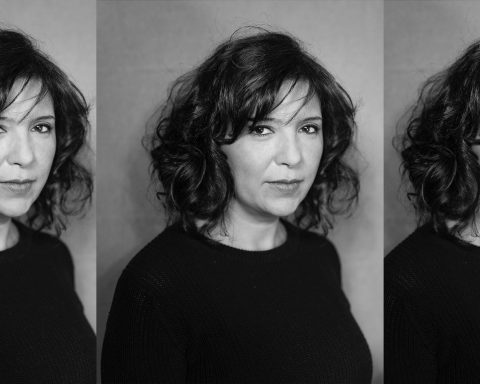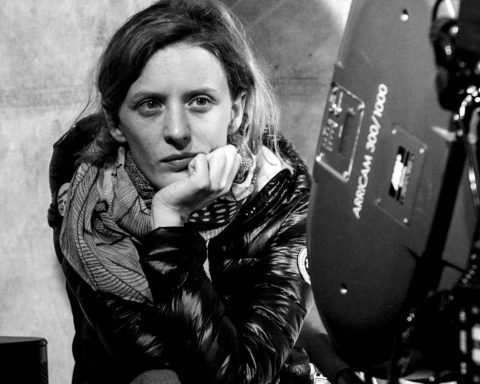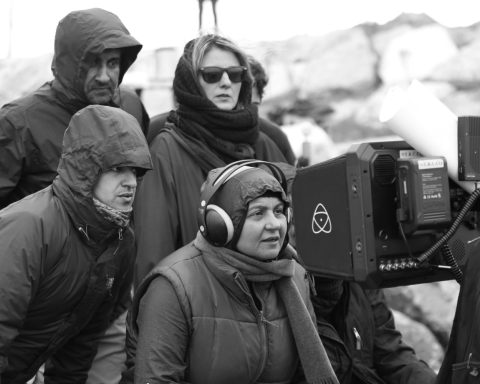Laura Samani was born in 1989 in Trieste, Italy. She holds a BA in Cinema and Communication Studies from the University of Pisa. She graduated in Directing from the Centro Sperimentale di Cinematografia di Roma. Her graduation short film “The Sleeping Saint” (2016) premiered in the Cannes Cinéfondation competiton and garnered international acclaim and awards at several international film festivals. Since 2018, she has been collaborating as a tutor with various associations, including Maremetraggio with the Visible City project, a workshop of self-narrative documentary for socially marginalized teenagers, and Cinemambulante, a traveling film festival that spreads film culture by screenining films in the squares of small towns in Friuli Venezia Giulia. Her first feature film, “Small Body,” (2021) premiered at La Semaine de la Critique in Cannes and is currently traveling the film festival circuit and screening at festivals like BFI London Film Festival, the Seville European Film Festival, the Thessaloniki International Film Festival, Liffe Ljubljana, Chéries Chéris Film Festival, the Cairo International Film Festival, the REC Film Festival Tarragona, the Annecy Italian Film Festival, the Villerupt Italian Film Festival, Montpellier – Cinemed and Festa do Cinema Italiano in Lisbon, Portugal.
Tara Karajica talks to Laura Samani about feminism and film as well as her debut feature, “Small Body,” a dark folktale about a young woman who embarks on a desperate journey to reach a mysterious sanctuary to save her stillborn daughter’s soul from the eternal damnation of Limbo. The film premiered at the 2021 Semaine de la Critique sidebar of the Cannes film festival and is now screening in the Europe! Voices of Women in Film program at this year’s Sydney Film Festival.
How did you get into filmmaking?
Laura Samani: As a child and teenager, I did theater. Then, at University, I chose to specialize in cinema. I didn’t know what I wanted to do next, but a friend of mine told me about the Italian film school, the Centro Sperimentale di Cinematografia. I applied for the Directing course and got selected. I didn’t grow up obsessed with wanting to make films; it was rather one of the many things I liked.
How did Small Body come about?
L.S.: In 2016, a gentleman from my region, Friuli Venezia Giulia, spoke to me for the first time about the sanctuaries of the breath. I began to investigate and found out that there were hundreds of them throughout the Alps. Usually, men made the trip and I wondered: “What if a woman made the trip?”
You have mentioned in a previous interview that Small Body is “the story of that moment in life when you create your own destiny” and that it always starts with a rebellion. Can you comment on that? What is, according to you, the film’s message?
L.S.: Almost all the stories tell that particular moment of life. This is why they are interesting to watch. I always urge the audience to take what they need from this story. In my case, what I learned is that you cannot free yourself on your own, but you can free yourself by freeing others.
The kinds of miracles depicted in the film started appearing in the second half of the sixteenth Century, around the time of the Counter-Reformation, but you set Small Body at the beginning of the twentieth Century. Why?
L.S.: The film is set in 1901 just as a symbolic date, since that is the Century in which a new tool arrived to deal with mourning – psychoanalysis. Until that moment, you could only face all the troubles in life with religion. I am not saying that psychoanalysis is better than religion, rather that it is nice to be able to choose from different tools.
What was the research process like? What did you learn while researching this topic, but also while making the film?
L.S.: It was a very long process, two years of research between location scouting and street casting. These two aspects were intertwined because I wanted the people involved to speak the local dialect and have the ability to do jobs that I needed like rowing, driving a wagon…
The film deals with superstition and different beliefs and rituals. What is your opinion on that? How is it different now? Do you have your own rituals and beliefs?
L.S.: I grew up with a base of bland Catholic culture on the one hand and the Grimm Brothers’ fairy tales on the other. Not having the tools, and not even the interest, to distinguish the reliability of one from the others, I took them as true in the same way, and therefore they amalgamated inside me. From the parables to Tom Thumb, these stories had the same weight in me: they were also bloody stories, but they gave you tools to face the difficulties of life. Yes, I do have my own rituals, I am a very superstitious person!
The society depicted in Small Body is rather pragmatic and not emotional. Can you comment on that?
L.S.: I think they are also emotional, but it is not told in the film. We are in Agata’s team; we don’t care about the others. Her husband, for example, is not a bad man – he’s just not Agata. He is experiencing grief in another way.
Can you talk about the casting and shooting processes?
L.S.: All the characters are played by non-experienced actors, except Ondina Quadri and Ivo Ban who plays the chief of the mine. For me, it’s important that people know they can rely on me because it’s them in front of the camera, not me. So, I expose myself a lot with them, to have fairness in the nudity.
And, about your sound design choices, very naturalistic and true to the period the film depicts?
L.S.: This reminder guided us: “Can you imagine there was so little sound pollution at the time that you could hear the bells in the distance and so you knew what time it was?”
Can you talk about the character of Lynx, who is pretending to be a man? How do you see her?
L.S.: Lynx has changed shape many times. At the beginning of the idea, Lynx didn’t exist and Agata was traveling alone. Think: “How boring!” The character as we know her now is the result of historical research – that is, if a girl at the time wanted to lead the life she wanted, the only possible solution was to pretend to be male. But, symbolically, Lynx is a multitude: biologically it is a she, who presents herself to the world as a he, but has chosen an animal name.
Why did you choose to use the dialect of your region, Friuli Venezia Giulia?
L.S.: In the film, there are at least two different dialects: Agata’s dialect, influenced by Venetian, and Lynx’s one, carnico. In Italy, we have hundreds of dialects, but the Italianization under fascism was violent, particularly in my region. It was forbidden to speak any dialect. I think language is the family you carry around when you are not physically with it, so that prohibition undermines your roots, your identity. I asked the people involved in the film, where possible, to speak in the language they think in, the one they dream in.
What were the challenges when making this particular film?
L.S.: The hardest part was shooting during the pandemic. To complete five weeks of shooting, it took us a year. Our workflow was more like that of a TV series rather than of a movie. But this gave me the opportunity to think.
Are you a feminist? If so, how does this inform your filmmaking?
L.S.: Hell, yes! One of my favorite words is equity! I choose collaborators based on their energy and humanity and I tell stories where the characters are first and foremost people.
What subjects interest you and that you would like to tackle in your work? What would you like audiences to come away with after watching your films?
L.S.: I hope people find out new things about themselves by watching my films. May they want to turn to their neighbor and introduce themselves and start talking.
Who is your favorite female filmmaker and what is your favorite film by a female filmmaker?
L.S.: Kelly Reichardt and her film Wendy and Lucy.
There has been a lot of talk about the situation of women in the film industry these past four years. What is your take on the matter? How is it in Italy?
L.S.: The situation is better than yesterday and worse than tomorrow. I feel very lucky because there are those who immediately believed in me, but that’s not the case for everyone. This question should be asked to producers, financiers and broadcasters, those who have the power to get the film to the public. These figures have the responsibility of recovering the charm, trusting a story, giving it space.
What are you working on next?
L.S.: I am writing the second feature while editing a short film.
Photo credits: Margherita Panizon.
This interview was conducted in partnership with:

and







